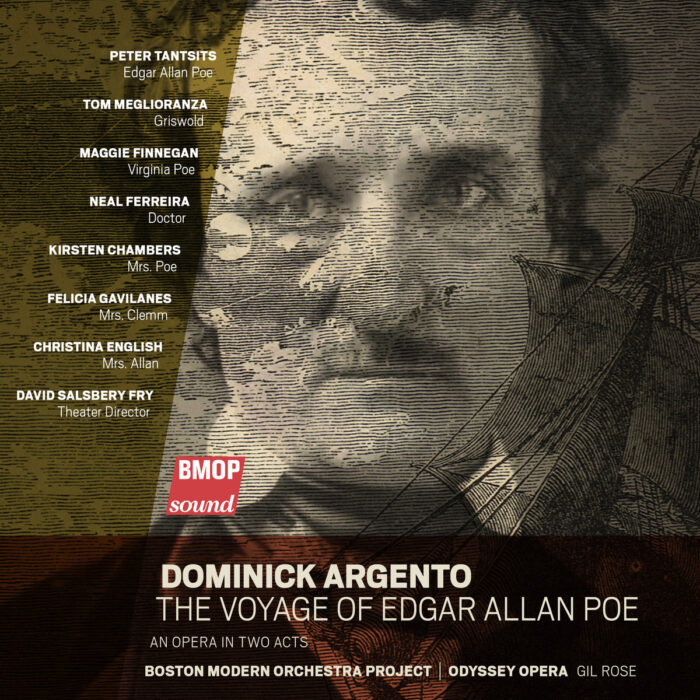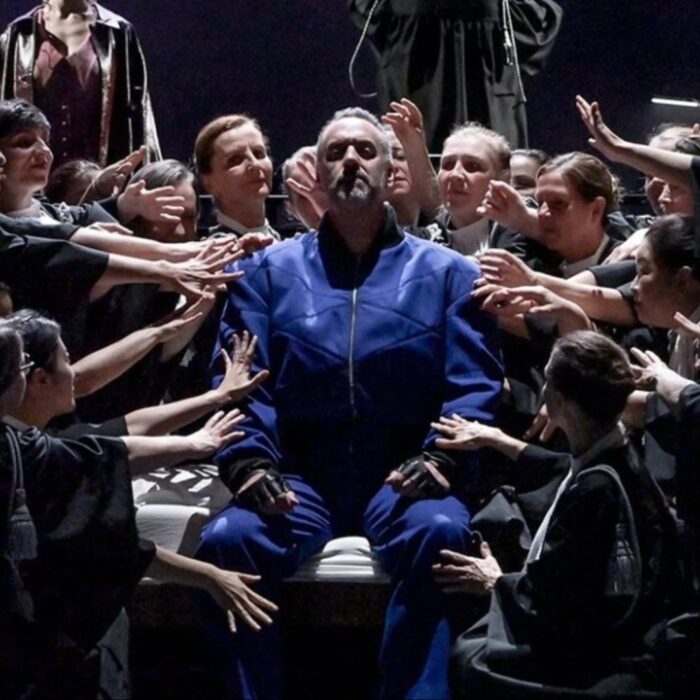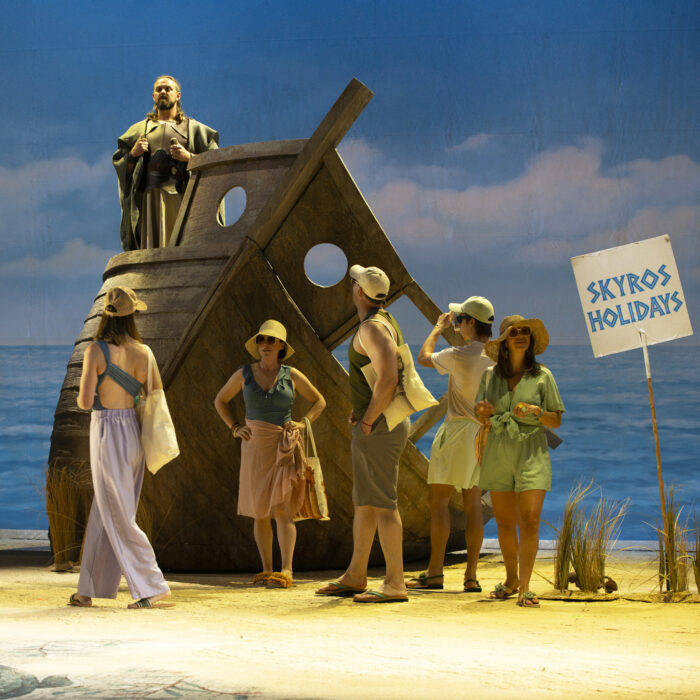
Eurasia Festival 2019 Review: Opening Night Gala & Eurasian Soiree
Festival Launches with Fascinating Lineup
By Logan Martell(Photo: Niabari Dugbor)
On June 24, 2019, the Eurasia Festival began its second year with an Opening Night Gala at the Kaufman Music Center. What ensued was a highly compelling tour through some of the musical and cultural heirlooms of the Eurasian region.
Introducing the festival and the artists to come was Eurasia Festival president Aza Sydykov.
“We have had an amazing amount of events since 2016, when we were incorporated,” began Sydykov. “Our concerts originally featured artists from Kyrgyzstan and eventually artists from other countries began reaching out wanting to perform. As a result of this cultural overlap we became the ‘Eurasia’ Festival. Many of our artists come from countries which were formerly Soviet countries, and we’ve expanded to China, South Korea, Georgia, and more; we are lucky to have an incredible lineup. We would also like to thank George Soros for his support through the Open Society Foundation as well as the Soros Foundation of Kyrgyzstan. Talking about this festival, it’s not just a music festival; it’s also to help understand the background of Eurasian countries. These countries, even today, have very difficult situations.
“Eurasia is home to more than just cultures and ethnicities, it’s also unfortunately home to international conflicts and brutal dictators. However, music and art always win. Our artists come from these countries to tell the world that nothing will stop the expression of art.”
A Starting Waltz
The concert opened with Tchaikovsky’s “Waltz-Scherzo, Op. 34,” played by violinist Vartan Mayilyantz and pianist Vera Danchenko-Stern. The light, open chords of the accompaniment were soon joined by the violin as it danced above the waltz rhythm to create a whimsical atmosphere.
This night saw a number of premieres, from cultural pieces to new arrangements of more famous ones. Following the first number was pianist and artistic director Jonathan Levin, performing the world premiere of Eric Thompson’s arrangement “Parade of the Charioteers,” composed by Miklos Rozsa for the 1959 film “Ben-Hur.” The opening measures unfolded powerfully after the third repetition of a melodic theme; its driving rhythm and expansive blend of tones achieved a sense of rolling grandeur.
From Rachmaninoff came two pieces sang by tenor Choong Lee. The first, “Dream, Op. 8, No. 5,” began with Danchenko-Stern’s rippling arpeggios as Lee gave an awed, yearning nuance to the opening phrase, translated as “There is nothing more desirable in the world than the dream.” Fleeting harmonic dissonances were used to open ideas and images from the text, as they flowed and resolved into more sonorous expressions.
The second piece, “Do not sing, My beauty,” bore a more languid tone. The accompaniment seemingly fixated around a recurring chord, this opening haunt was broken by Lee’s strong, ornamented phrases of anguish. The descending measures between the stanzas often jumped back up to a sorrowful intensity which Lee took up passionately. The murky, lower tones of the conclusion were capped off by a brief but wide, sweeping chord in the accompaniment.
Later in the evening’s program came two Korean songs, performed by baritone HyungJoo Eom. The first was Hak Jun Yoon’s “Majoong,”which made a wonderful introduction to Eom’s firm, lyrical vocal beauty. This strength lent itself nicely to the more emotionally-charged phrases, with Eom demonstrating a shuddering, delicate quality in a later section.
The second song was Ilnam Jang’s arrangement of a Korean folk song “Song of the Shingo Mountain.” The powerful tumult of the opening was joined by Eom’s large, sustained opening. As the accompaniment gentled, two sweeping chords brought the piece to its earlier atmosphere, the light tremolo sounding under Eom’s vocal outpouring, leading to a tremendous conclusion.
Songs from Xinjiang
Among the festival’s roster of artists was Uyghur soprano Nilara Mutalifu, who shared three pieces from her homeland in the Xinjiang Uyghur region of China. The first, Iskender Seypulla’s “Tarim,” named after a river in the region, featured an extended piano introduction played by Jonathan Levin, with Mutalifu immersing herself in the dramatic atmosphere as she surveyed her surroundings. Her passionate delivery was accented by her handling of the melismatic phrases, with this piece resolving to a sorrowful close. These feelings also carried into the second piece by Seypulla, titled “Longing.” Here, Mutalifu displayed a full, and luxurious soprano quality through the more legato sections. The third of her selections was “Wine of Love.” The flighty accompaniment unfolded through an oriental scale as Mutalifu delivered the text with a sultry, effervescent energy.
Another world premiere came in Levin’s “Village Scene,” a piano arrangement based on Kyrgyz themes. Levin briefly explained that the inspiration came from a Kyrgyz instrument described as a precursor to the cello, one that could also be played while on horseback. This piece made fascinating use of dissonant chords, with trills to brighten the texture, and a crossed-hands technique which interspersed it with minor 2nds.
Eurasian Soiree
The third night of the festival saw the artists perform in the Nicholas Roerich Museum, amidst paintings that were inspired by Roerich’s travels throughout Eurasia, as well as works of music such as Stravinsky’s “Rite of Spring,” and Borodin’s “Polovetsian Dances” from his opera “Prince Igor.” A number of pieces made reappearances from the opening night gala; among the operatic selections for this evening was Dvorak’s “Song to the Moon” from “Rusalka,” sung by Heather Antonissen.
The contemplative opening saw Antonissen nearly entranced with Rusalka’s longing, before her beckoning tones rose to fuller beauty. While the evening’s venue certainly was not constructed with opera singers in mind, Antonissen’s resonance never became overbearing despite the power she demonstrated. Her sense of visualization added much to her rendition, giving clear purpose behind the lovely sounds she produced.
Following Antonissen was Chinese soprano Chuyan Luo. Her first selection was Glinka’s “I remember a wonderful moment,” a musical setting of the poem by Pushkin. The sweetness of the accompaniment’s introduction made a fitting compliment for Luo’s captivating, pristine tones. The troubled mood of the middle section was announced not only through the music, but by the way Luo’s smile melted from her face, taking on a nearly-stunned expression. These opposing feelings were reconciled in the third and final section, with Luo bringing the piece to a gentle, prayerful close.
Her vocal and dramatic qualities were taken to joyous heights with her next piece, the Snow Maiden’s aria from the prologue of Rimsky-Korsakov’s “The Snow Maiden.” The flurry of notes from the accompaniment were quickly joined by the excited, almost pattering rhythm of Luo’s opening phrases. The elemental nature of the character was finely evoked by a series of vocal runs; each instance saw Luo using her coloratura along with a shifting ‘a’ to ‘u’ vowel, sounding as if a songbird were trying make a wolf-call. Another notable technique was how she used her rolling consonants, shaping them to trills, and most notably using it to launch into her gorgeous, soaring conclusion.
Both the Opening Night Gala and Eurasian Soiree events were brought to a spectacular finish by Omurgazy Zhyrgalbek playing the Kyrgyz komuz and the Kazakh dombra, two instruments which bore qualities similar to the mandolin and lute, respectively.
His first piece, Mukash Borbiev’s “Morning Nightingale,” employed a myriad of strums, slaps, knocks, and taps to create a breadth of sound. With the attention of the audience often placed on Zhyrgalbek’s right hand, he often liked to throw it out to his side to a series of fun, misdirecting gestures, while his left hand tapped at the strings on the neck of his instrument to keep the music going. Proving not just his virtuosity with the instruments, but his sense of showmanship and the enjoyment with which he plays, Zhyrgalbek went through a sequence of positions, placing the komuz away from him, on the floor, behind his head, and more.


